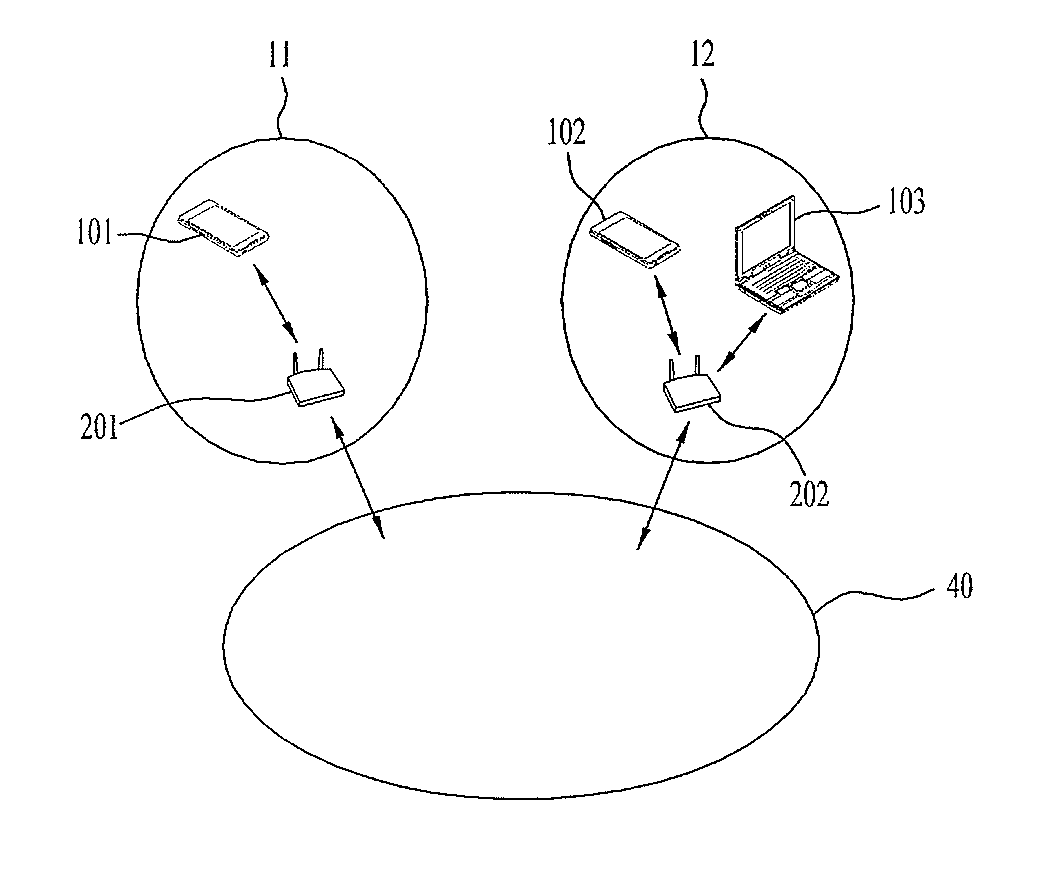Data transmitting method using power detection, and device thereof
- Summary
- Abstract
- Description
- Claims
- Application Information
AI Technical Summary
Benefits of technology
Problems solved by technology
Method used
Image
Examples
Example
First Embodiment
[0158]In a first embodiment disclosed in the present specification, a method for transmitting data using power detection of an adjacent channel at a transmitter will be described.
[0159]FIG. 15 is a flowchart illustrating a method of transmitting data using power detection at a transmitter according to a first embodiment disclosed in the present specification.
[0160]Referring to FIG. 15, the transmitter detects power of a channel to be used (S1510).
[0161]The transmitter may detect power of a channel to be used to transmit data to a receiver.
[0162]The transmitter may be one of a BS, an access point (AP) or a UE capable of performing data transmission and reception in a wireless communication system. The channel may be an arbitrary channel belonging to a frequency bandwidth used by the transmitter. For example, if the transmitter is a UE which utilizes an LTE system, the channel may be a channel using a frequency bandwidth (e.g., bandwidth of 1.8 GHz or 2.1 GHz) used in ...
Example
Second Embodiment
[0196]In a second embodiment disclosed in the present specification, the case in which the transmitter receives data using power detection of the adjacent channel, via which data is being received, will be described.
[0197]FIG. 17 is a diagram showing data transmission using power detection of an adjacent channel in a transmitter according to a second embodiment disclosed in the present specification.
[0198]Referring to FIG. 17, the transmitter (UE) may receive data using the channel Chown (at this time, the transmitter may receive data using a general communication terminal) and, at the same time, other UEs UE2 and UE3 may receive (Rx) data using the adjacent channel Chadj.
[0199]In this case, since the receive power of the channel Chown is not so high as unnecessary radiation to the adjacent channel Chadj is caused, interference is not caused due to unnecessary radiation.
[0200]Accordingly, the transmitter (UE) may receive data using the channel Chown as the result of...
Example
Third Embodiment
[0201]In a third embodiment disclosed in the present specification, the case in which the transmitter transmits data using power detection of the adjacent channel, via which data is being transmitted, will be described.
[0202]FIG. 18 is a diagram showing data transmission using power detection of an adjacent channel in a transmitter according to a third embodiment disclosed in the present specification.
[0203]Referring to FIG. 18, the transmitter (UE) may transmit data using the channel Chown and, at the same time, other UEs UE2 and UE3 may transmit (Tx) data using the adjacent channel Chadj.
[0204]In this case, the receive power of the channel Chown may cause unnecessary radiation to the adjacent channel Chadj. However, since the transmit power of the adjacent channel Chadj, via which data is being transmitted, is as high as the power of the channel Chown, when relative signal levels are considered, performance may not deteriorate due to unnecessary radiation
[0205]Acco...
PUM
 Login to View More
Login to View More Abstract
Description
Claims
Application Information
 Login to View More
Login to View More - R&D
- Intellectual Property
- Life Sciences
- Materials
- Tech Scout
- Unparalleled Data Quality
- Higher Quality Content
- 60% Fewer Hallucinations
Browse by: Latest US Patents, China's latest patents, Technical Efficacy Thesaurus, Application Domain, Technology Topic, Popular Technical Reports.
© 2025 PatSnap. All rights reserved.Legal|Privacy policy|Modern Slavery Act Transparency Statement|Sitemap|About US| Contact US: help@patsnap.com



